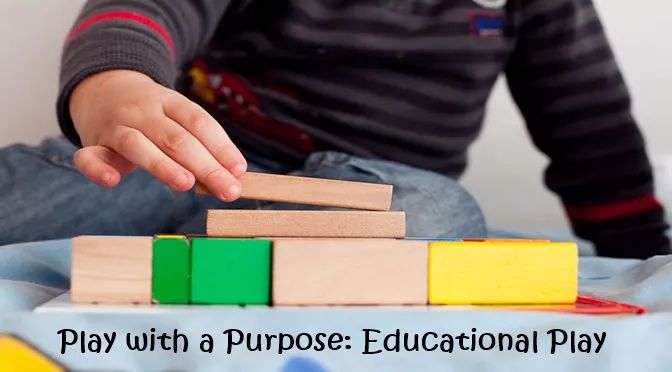
Play with a Purpose: Educational Play
March 2015
by jessica morgan tomes
With each passing day, the long summer months creep ever closer (however unlikely that seems with the snow that greeted us this morning...). You may already be wondering, what the heck am I supposed to do with these adorable little monsters all summer long to keep them happy, while still maintaining a shred of sanity? Before you hit the Redbox a million and one times (or drink a little too much “mommy juice”), check out this local resource for easily-implementable educational play ideas. And remember, fun is not always synonymous with hard, or elaborate.
What is Educational Play? And why is it so important for development?
“Learning through play is a term used in education and psychology to describe how a child can learn to make sense of the world around them. Through play, children can develop social and cognitive skills, mature emotionally, and gain the self-confidence required to engage in new experiences and environments.”
-Human Growth and the Development of Personality, by Jack Kahn and Susan Elinor Wright
Mommy blogger and Billings’ transplant, Tiffiny Spire, says educational play is any activity or educational objective (fine motor skills, mathematical skills, literacy skills) that is carried out in a fun and engaging way. She says it’s not flashcards and worksheets – it’s a physical, hands-on activity in which a child is actively participating. She adds novelty goes a long way in retaining a busy toddler’s attention.
“I think humans are naturally curious creatures. Children are open vessels, eager to be filled with knowledge. Giving them small challenges with lots of guidance in an engaging manner helps them grow, and learn at their own pace,” Tiffiny says. “A young child will have very little interest in learning colors with flash cards, but sorting buttons, or doing some painting activities, will engage just about any youngster. And once you’ve got their curious little minds engaged, look out!”
A Fantastic local resource for Billings’ mommies and daddies
Before her daughter was born, Tiffiny Spire worked as an elementary educator in Arizona. The Spires moved to Billings to be closer to family. Tiffiny says that when her daughter (“Pook”) was about 8 months old, she felt like she needed more stimulation. So, not unlike any other modern mommy in the digital age, she turned to the Internet for age-appropriate ideas and activities. And that’s when the seed for her own blog was first planted, she says. As a former teacher, she couldn’t help but notice “teachable moments”. She decided to use her training, and work with her daughter, to add something meaningful to the blogosphere.
She created Spark and Pook in October of 2013 (named after Tiffiny and her daughter). On the blog, Tiffiny features crafts and activities for littles, books and reading suggestions, and lots of other goodies. She says approximately 90% of the content is original, the remaining 10% is stuff she finds on their travels, or in children’s books they’re reading. She also occasionally finds things on Pinterest, and modifies them as necessary. She says she hopes to continue to grow the blog – both in readership and content – and would love for the blog to be a useful resource for other Billings’ families for many years to come.
“The best thing you can do to help your child’s education, no matter what age, is to read to and with them,” Tiffiny says. “It is never too early - or too late - to start. This one thing will have a positive, lasting impact on their learning.”
Give it a try!
Here’s a fun idea for learning in the kitchen with toddlers. I saw something similar recently in an issue of MOPS International’s magazine Hello, Darling, and thought it was just too good not to share. This activity is appropriate for kiddos ages 1 year old plus.
Here’s what you’ll need:
- Construction or computer paper
- Crayons or colored pencils
- Various objects from the kitchen, including cookie cutters, spoons and spatulas, and anything with an interesting yet traceable shape
- A little bit of patience
Here’s what you do:
Depending on your child’s age (and ability to not destroy your kitchen), help him trace the shapes onto the blank sheets of paper, one at a time. If you prefer, you can just trace the shapes yourself. Then, have her help you identify which shapes match with which sheet of paper. Don’t stress, the shapes don’t have to be perfect. Your little one will have a blast regardless. My almost 3 year old started matching the shapes to the “pictures” before I even asked her to! It was definitely a proud mama moment. My 1 year old had fun making a mess. But hey, that’s part of the learning process, too.
About the author…Born and raised in southeast Texas, Jessica currently lives in Billings, Montana with her husband, her two year old daughter Savannah, and their newest addition, one year old Emma Kate. Jessica graduated from Texas Christian University with a degree in Broadcast Journalism. By day, Jessica works as a licensed Realtor, and moonlights as a freelance writer/photographer for several businesses around town




